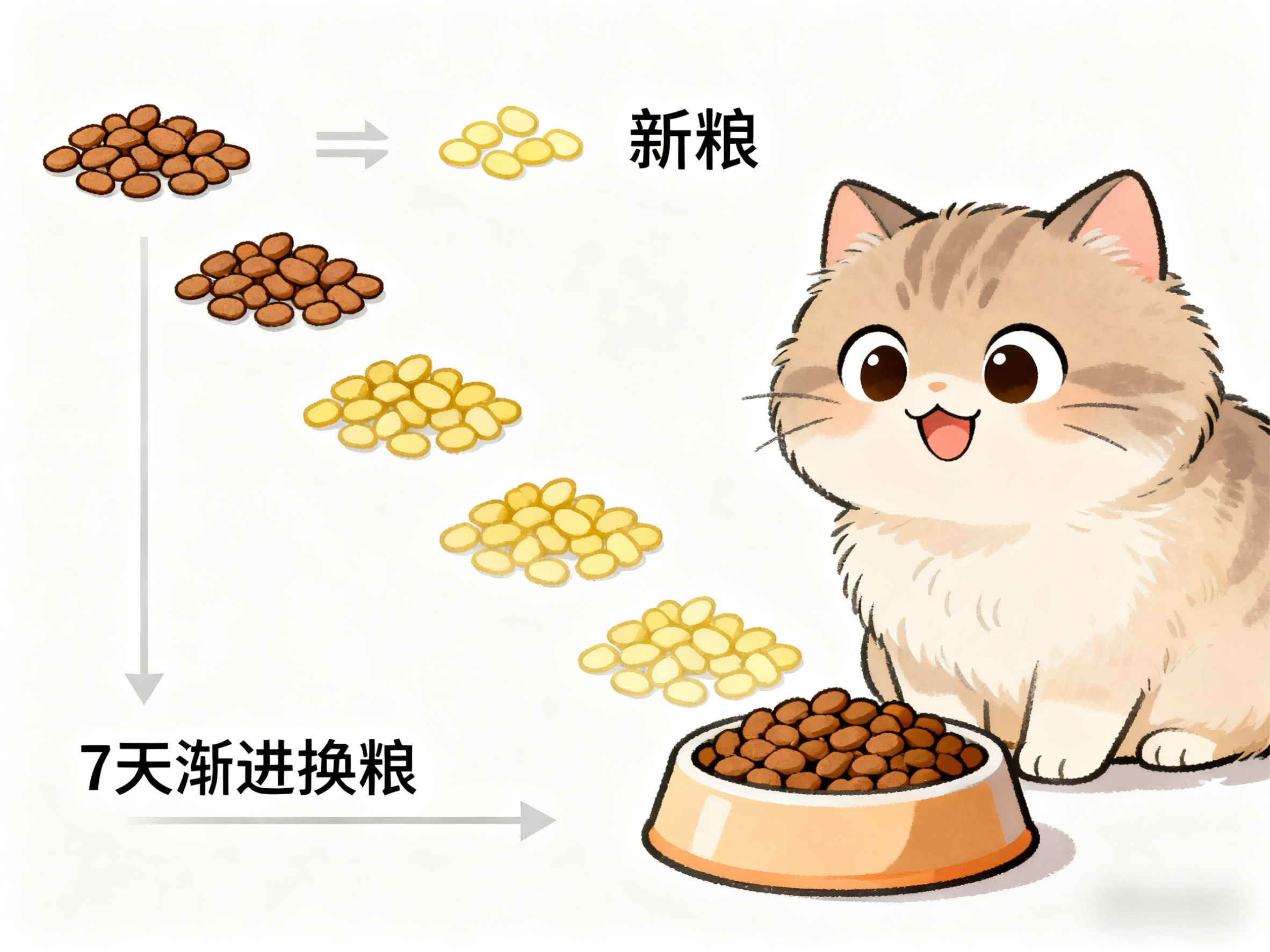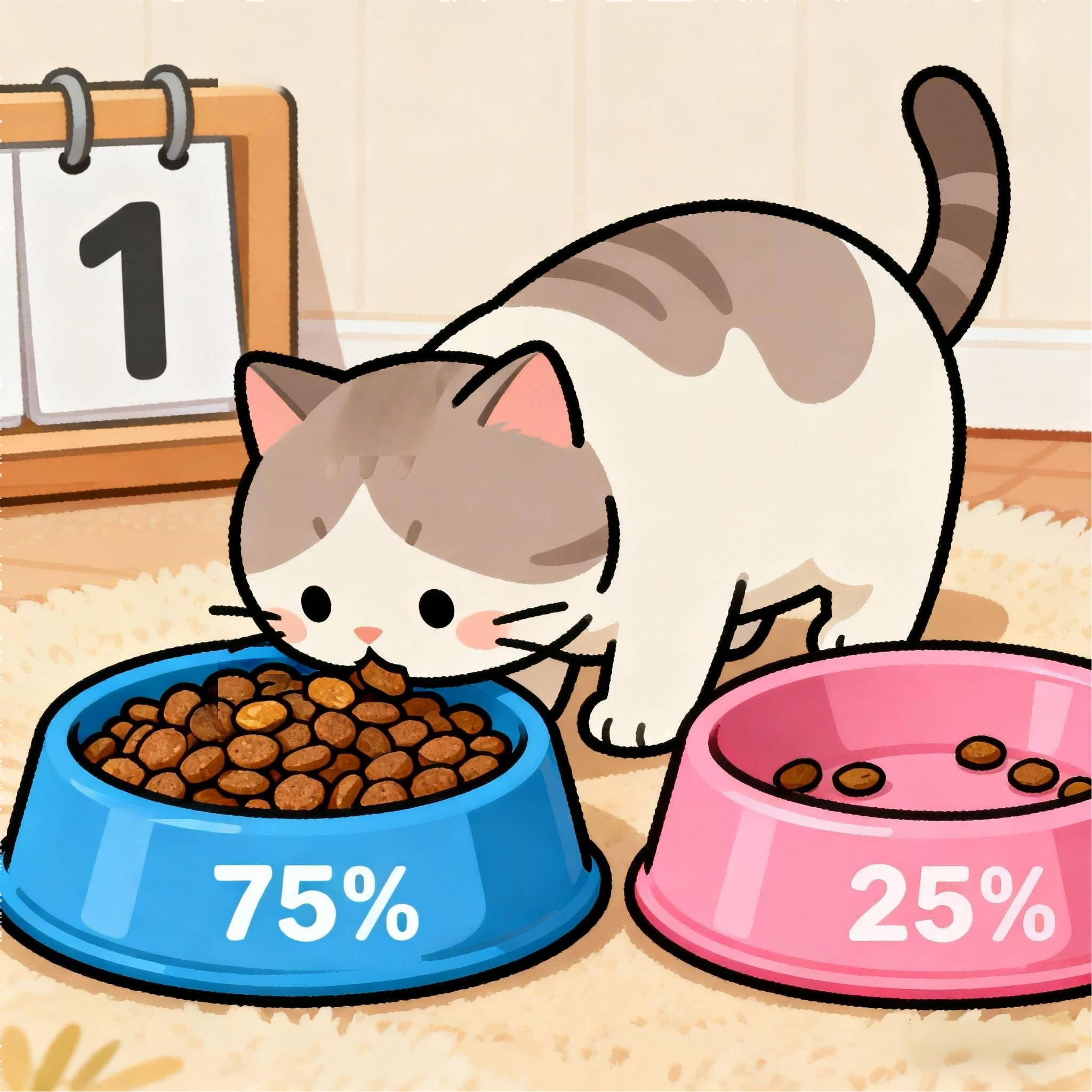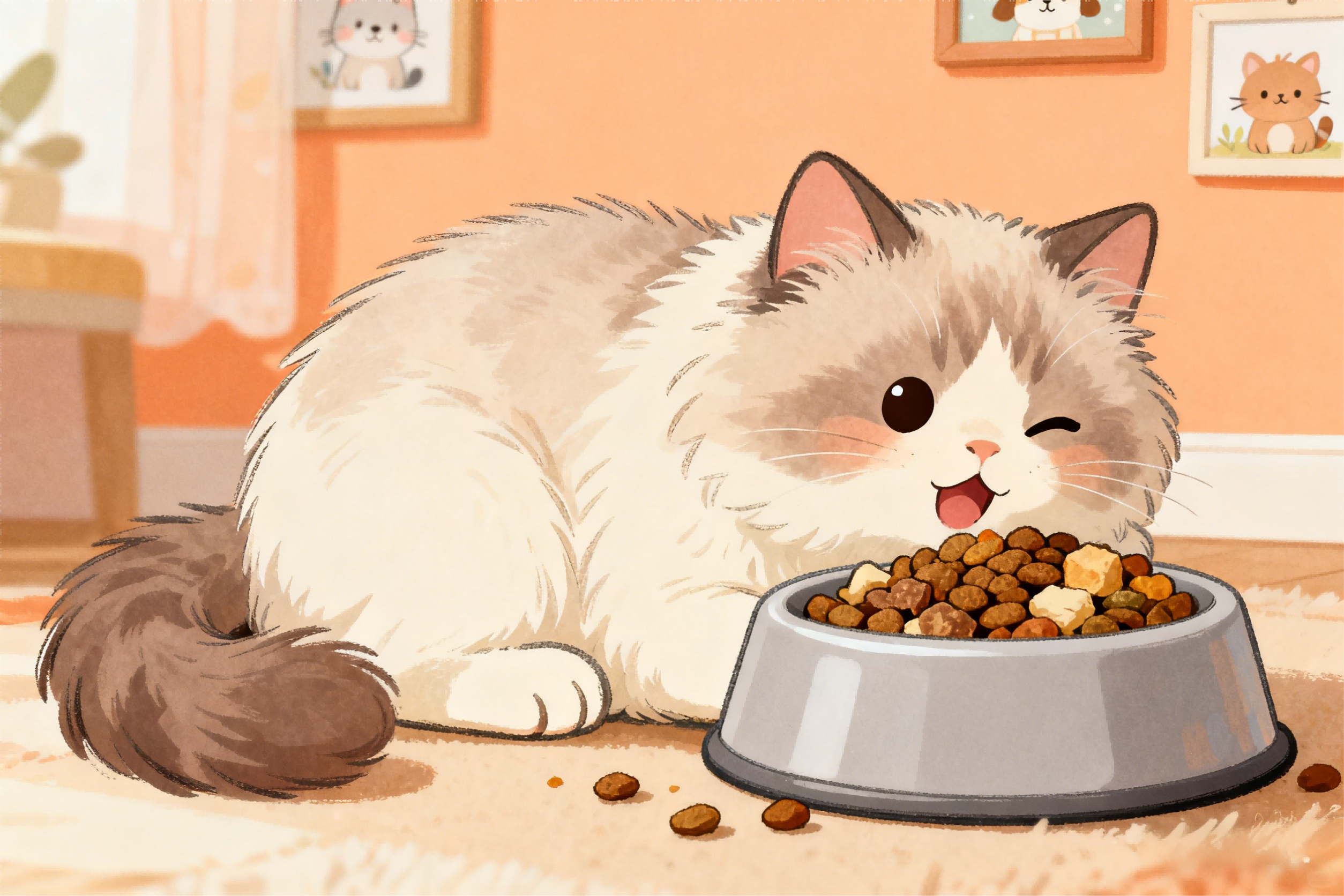At WERVIC, we understand that your cat’s digestive health is foundational to their overall well-being. Switching your cat’s food—whether due to life stage changes (from kitten to adult), dietary needs, or formula preferences—requires a thoughtful, gradual approach. Abrupt food changes can disrupt your cat’s sensitive gut flora, leading to issues like diarrhea, vomiting, or reduced appetite. Below is a science-backed guide to help you navigate the transition smoothly, keeping your feline friend healthy and happy.

Why Gradual Transition Matters
Cats have a unique digestive system with a delicate balance of gut bacteria. Unlike humans, their bodies adapt slowly to new food ingredients. A sudden switch can shock the gut, breaking down this balance and triggering digestive distress. For vulnerable groups like kittens (still developing digestive systems), senior cats (with declining gut function), or cats with pre-existing sensitivities, the risk of discomfort is even higher. A gradual transition allows the gut flora to adjust, minimizing stress and ensuring your cat absorbs nutrients effectively from the new food.
The 7-Day Gentle Transition Plan

Our recommended 7-day method is designed to ease your cat into their new diet without upset. Follow this ratio breakdown, and monitor your cat’s behavior and stool consistency closely each day:
- Days 1–3: Mix 75% of the current (old) food with 25% of the new food. This small proportion of new food lets your cat get used to the new flavor and texture without overwhelming their gut. Pay attention to their appetite—if they hesitate to eat, keep the ratio steady for an extra day before progressing.
- Days 4–6: Adjust the mix to 50% old food and 50% new food. This is a critical phase: watch for soft stools, lethargy, or refusal to eat. If mild softness occurs, pause at this ratio for 1–2 days until their stool returns to normal. Avoid adding treats or supplements during this period, as they can further disrupt digestion.
- Day 7: Transition to 100% new food. If your cat has tolerated the 50/50 mix well, they’re ready for the full switch. Continue monitoring for 2–3 more days to ensure no post-transition issues arise.
Key Tips for Success

- Choose the Right New Food: Align the new food with your cat’s needs—e.g., high-protein formulas for active adults, grain-free options for sensitive skin. If switching from a chicken-based old food, start with a chicken-based new food to reduce flavor shock.
- Stick to a Routine: Maintain consistent feeding times and portions throughout the transition. Cats thrive on predictability, and a stable routine helps reduce anxiety around mealtime.
- Know When to Pause or Seek Help: If your cat experiences severe diarrhea (more than 24 hours), vomiting, or complete refusal to eat for 3+ days, stop the transition immediately and revert to the old food. Contact your veterinarian to rule out underlying health issues before trying again.
- Be Patient with Picky Eaters: Some cats may take longer to accept new food. Try warming the new food slightly (for wet formulas) or sprinkling a tiny amount of their favorite freeze-dried topping (in moderation) to encourage interest.
We’re committed to supporting your cat’s health at every stage. By following this gentle transition guide, you’ll help your cat embrace their new diet comfortably—ensuring they get the nutrition they need to thrive.




